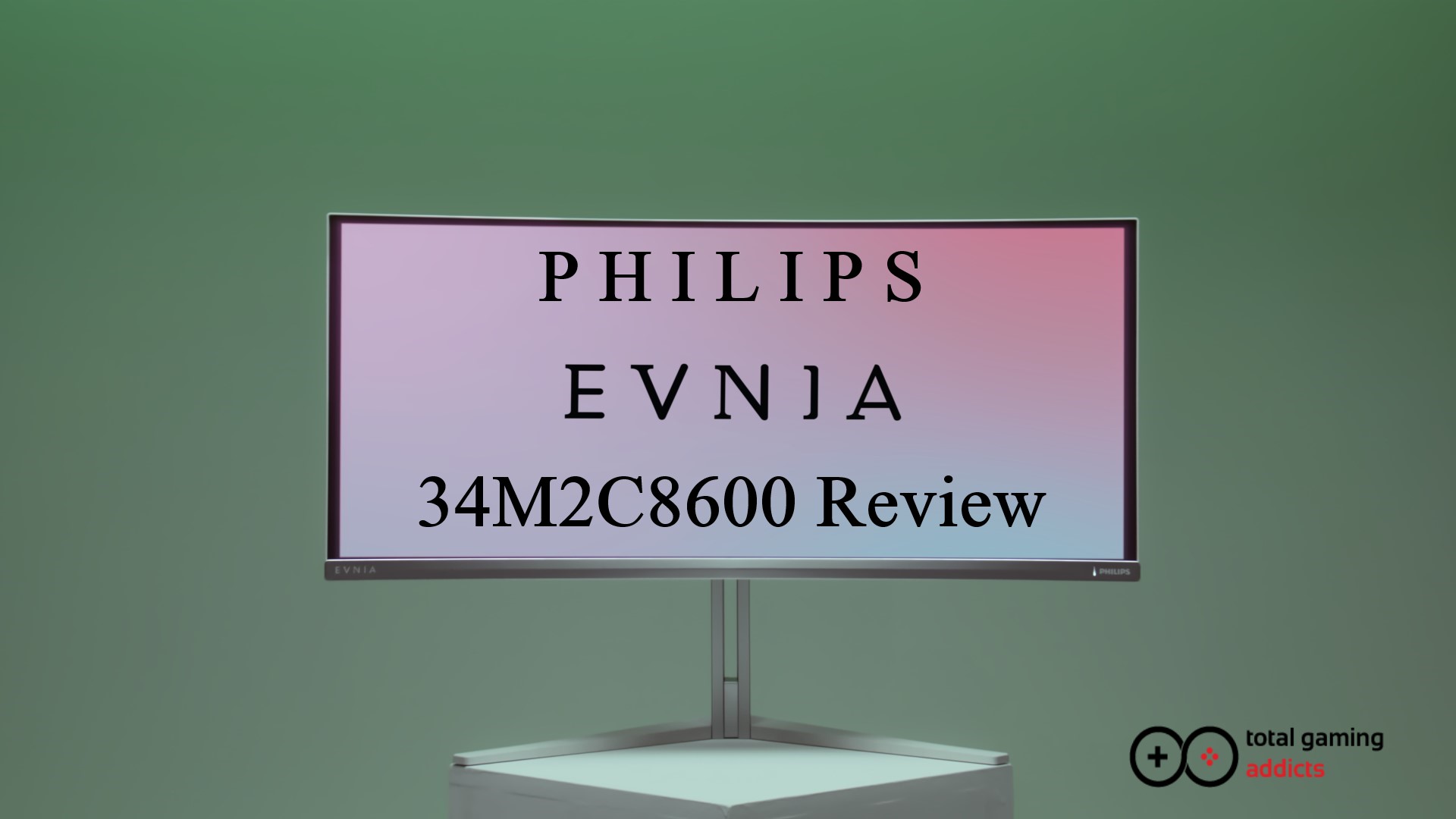The QD-OLED Philips Evnia 34M2C8600 is an almost perfect ultrawide
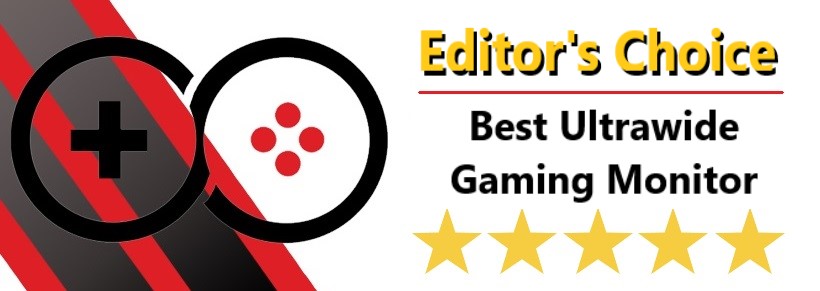
- Manufacturer: Philips
- Model: Evnia 34M2C8600
- SKU: 34M2C8600/00
- Display Type: QD-OLED Gaming Monitor
- Resolution: 3440*1440 (1440p/WQHD)
- Refresh rate: 175 Hz (100 Hz HDMI)
- Price when reviewed: £1,150
- Supplied by: Philips
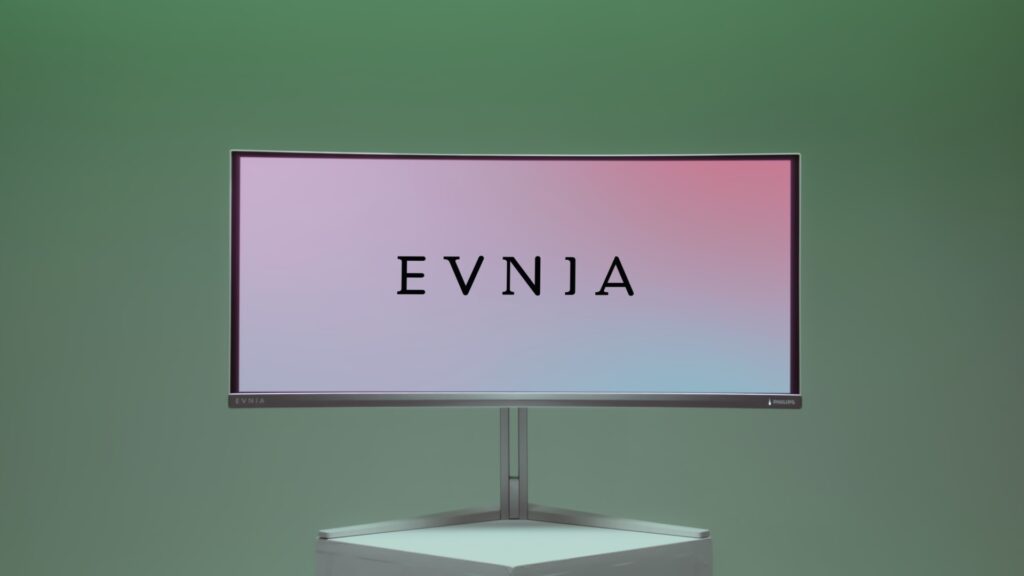
Philips Evnia 34M2C8600 Review
Overview
If you’re looking for the TL:DR verdict, let’s get it out of the way – This is one of the best gaming monitors I’ve ever tested, and comfortably the best ultrawide (21:9). Panel uniformity is the best we’ve ever seen, as is the input latency, G2G response and overall gaming performance. The only thing I found to complain about is the lack of integrated colour adjustment, as the white balance needed to be slightly adjusted, but this should hopefully be added via a firmware update down the line.
There’s an argument to be made that, if you’re on a budget, the Evnia 34M2C8600 is quite expensive, and it is, at £1,150. However, unlike the most expensive PC components, monitors can outlast several generational upgrades before becoming outdated. As an example, I have a Samsung monitor I bought in 2007, which apart from the paltry 1080p 60Hz specification, still looks superb and gets regular use – the desktop I bought at the same time? Not so much. The point is, investing in a quality monitor makes much more sense as a long-term investment as opposed to a new CPU or GPU. I’d argue that a quality display is far more beneficial in the long term than squeezing out a few more FPS today.
So, why is this display so good? Well, if you’re after a bigger, traditional 16:9 panel for more than just gaming (productivity, movie/TV show watching) or for pairing with the latest consoles, then the recently reviewed 42M2N8900 is the one I’d choose. However, when it comes to PC gaming, the 34M2C8600 is infallible. The response is lightning fast, the 34” panel is essentially an elongated 27” display which is a brilliant balance between size and pixel density for competitive and casual gaming alike, and the 1440p resolution matches well with both lower-mid to higher-end hardware alike and should last you several generations of PC upgrades. The picture quality? This OLED monster is simply stunning.
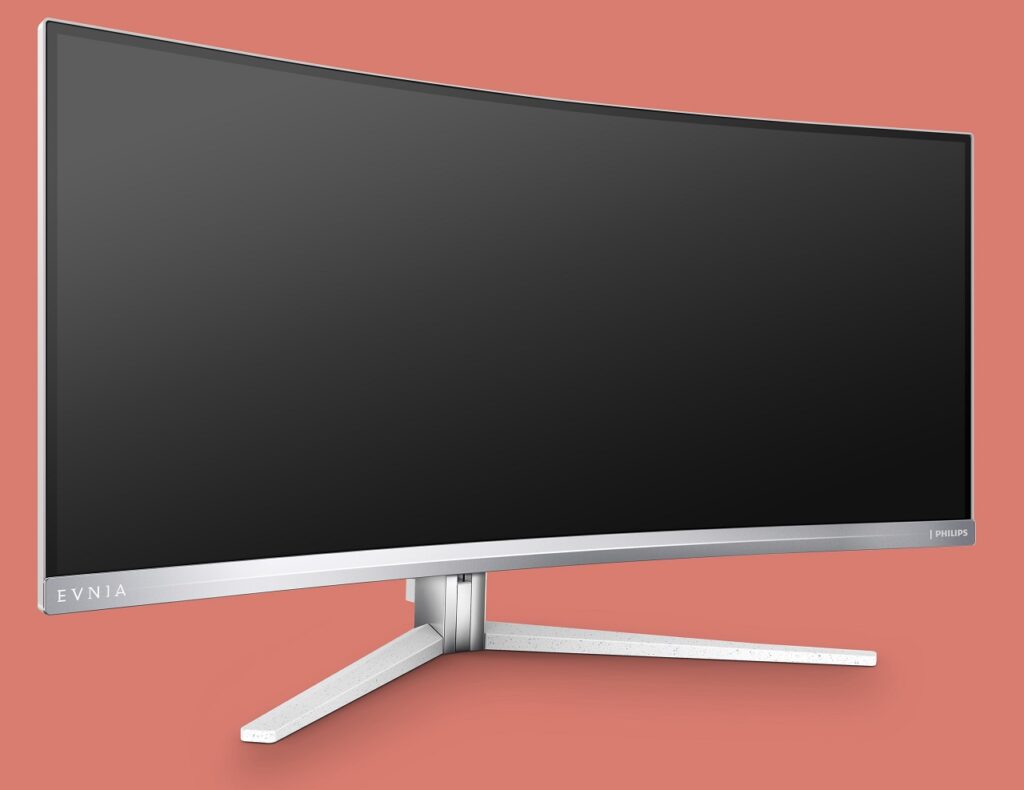
Design and build
The 1800R curve of the 34M2C8600 is subtle, but does wonders in bringing the edges of the display into your periphery, making this display feel even wider than it actually is. Flanked at the sides and top by thin bezels, and an impressively slim chin bezel, it’s a fantastic-looking monitor.
The V-shaped stand is quite large, and although it doesn’t extend much past the front of the display, the front of the panel still sits quite far from the wall/rear of your desk, especially when you factor in the pronounced curve of the Evnia. It’s an improvement over some of the chunkier stands we’ve tested, but there’s definitely room for improvement when third-party stands and monitor arms are much smaller and just as stable.
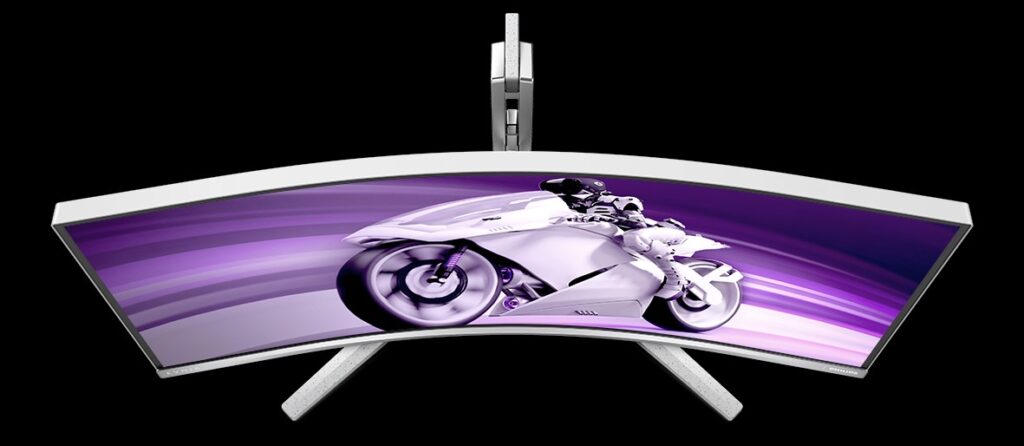
Philips has utilised recycled materials where possible (even though you can’t really tell), and given the Evnia a very distinctive colourway, with white rear panels, a silver/white chin bezel, and a magnificent speckled white stand that I simply adore. It may not be to everyone’s taste, but Evnia’s premium predominantly white colourway looks incredible to me.
The Evnia 34M2C8600 has a full range of ergonomic adjustments (except it can’t be pivoted into portrait orientation). allowing you to tilt -5/+20 degrees, swivel +/- 20 degrees, and adjust the height by 150 mm. It’s pretty standard for gaming monitors, but I appreciated being able to lift the display to full height, tilt it back and be able to see where I was plugging my cables in.
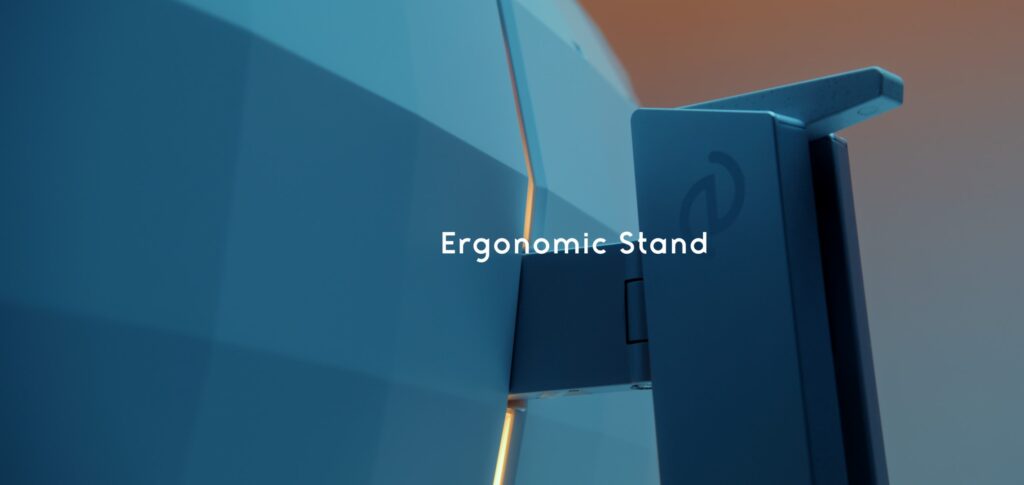
I love Philips’ AmbiGlow technology, but unfortunately, it fails to reach the stunning brightness of its Momentum “Designed for Xbox models” when using the follow video mode, and it produces off-white hues rather than a full gamut of colour matching what’s on screen. This is very disappointing, as the AmbiGlow on the 559M1RYV is stunning, providing superb dynamic backlighting that enhances immersion. Set the AmbiGlow to static, however, and it’s wonderfully colourful and bright. We found the same thing with the 42M2N8900, so I believe this may be either a conscious decision or a firmware issue that’s restricting the colour and brightness of AmbiGlow.
Finally, and I’m so happy to be able to say this, the control joystick is relatively easy to reach without having to bend your entire wrist behind the monitor. This was a major bug-bear of mine on other Philips displays, so I’m very happy they’ve moved it closer to the edge of the monitor. I’d prefer it to be in the centre/bottom and reachable from the front of the display for those of us with multiple displays or limited space, but it’s a step in the right direction, and as far as the menus go, they’re slick, easy to navigate and responsive in operation – good job, Philips.
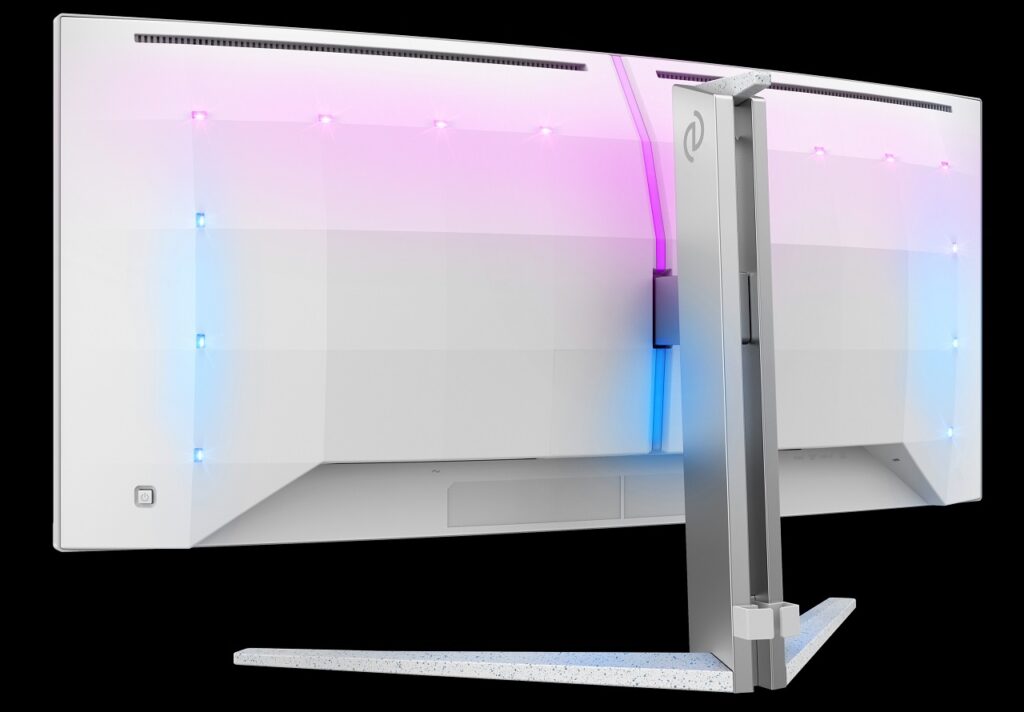
I almost forgot to include this, but the Evnia 34M2C8600 has a built-in cooling fan – the reason I nearly forgot is that you can’t actually hear it. Even after a lengthy gaming session at full HDR brightness, it was inaudible, especially over the sound of my PC’s AIO pump fan (which is pretty quiet as it is).
Connectivity and Supported Resolutions
The Philips Evnia 34M2C8600 has a great selection of ports: 2x HDMI 2.0, DisplayPort 1.4 and USB-C inputs handle display connections for PCs, laptops and consoles, along with a 3.5mm audio out and a four-port USB 3.2 Gen1 (5 Gbps) hub which has 4 downstream USB-A ports (including one fast-charge port).

The 42M2N8900 supports the following optimum resolutions:
HDMI 2.0: 3440*1440 @ 100 Hz
DisplayPort 1.4: 3440*1440 @ 175 Hz
USB-C: 3440*1440 @ 175 Hz
A minor downside is that there is no HDMI 2.1 support, which limits the maximum refresh rate to 100Hz via HDMI. For users with laptops with a DP over USB-C connection, this won’t be an issue as USB-C delivers the full bandwidth, but if you only have HDMI from your laptop you’re slightly restricted in this regard.
The Evnia 34M2C8600 is Freesync Premium Pro certified, but it also unofficially supports G-Sync, so although you won’t get the full 1-175Hz adaptive sync range via DP, USB-C or HDMI (100Hz), you get a perfectly acceptable 48-175Hz (100Hz HDMI) sync window across your inputs.
As far as consoles go, I had the same issue I’ve had with other Philips displays. Yes, you can run them in a horizontally bordered 16:9 format, but the implementation is temperamental, and I frequently had issues getting the monitor to properly window the output, resulting in a stretched picture. Although it’s something I’d like Philips to address, they also make excellent 16:9 aspect ratio displays that are far better suited to consoles (check out the 279M1RV), so it’s hard to criticise them in this regard.
Again, when it comes to the PBP function, I had hit-or-miss results with image scaling and had problems consistently displaying split-screen content at the correct aspect ratio. I’d argue that the resolution doesn’t suit PBP content that well anyway, and although it’s possibly a useful feature to some, it’s such a niche feature that I can’t mark the 34M2C8600 down for it.
I’ve been excessively picky here, but there’s so little to fault with this monitor. This is a PC gaming display, so for most of the targetted consumers, the above points are probably moot.

The integrated USB hub is immensely useful, facilitating KVM switching for multiple inputs (USB-C and USB-A upstream). The location of the second pair of USB ports is unusual, mounted beneath the front bezel, which means they are arguably more practical if you only occasionally use them, but if they are in constant use it could be a bit of an eyesore.
I use USB-C from my laptop and USB-A from my desktop, and found the auto-switching to be very reliable, as well as it being easy to switch if you’re using PBP (display scaling issues aside). If you’re using USB-C, you can also get up to 90 W charging via the cable, but this is limited to 65 W at higher brightness levels (above 70%) and if more than 5W is being drawn by the USB hub. Unlike the 42M2N8900, the ratio between brightness and the display setting is far more linear, so 70% brightness (around 175 cd/m²) is suitably bright if you need to quickly squeeze extra life into your laptop during use.
Display quality
For consumers, it’s great when a company properly calibrates their displays, and it’s always satisfying when we find a monitor that can be plugged in and used straight out of the box with no adjustments. Aside from the missing colour correction settings, I didn’t need to change a thing on this monitor. The Evnia 34M2C8600 is astounding, straight out of the box.
It’s somewhat of a rarity these days, but the Evnia 34M2C8600 has a glossy panel, which makes the display look exceptionally sharp compared to most displays on the market that utilise a matte anti-glare coating. You do get a bit of reflection in a very bright room, but for me, I’ll take this any day considering how crisp this display looks.
Panel response
A major highlight of this monitor is the sub-2ms input latency – it’s simply staggering, and at the levels we haven’t seen since the days of CRT. Panel response is equally staggering, measuring in with sub-1ms response times across the whole range of G2G transitions. The best IPS displays we’ve tested come in at around 6-8ms at their best, which is brilliant, but this is on a whole other level. You can make other displays faster, but not without using overdrive which invariably results in overshoot (visible as inverse ghosting and coronas). With the 34M2C8600, you don’t even get an overdrive setting, because it doesn’t need it. This is the native response, showing no artefacts, ghosting or coronas.
Brightness, contrast and colour
The sRGB setting’s white point was closest to our target 6500K measuring 6200K, and the 6500K colour preset achieved a white point of 6100K. During our analysis, we found the undersaturation of greens was the limiting factor, and a small adjustment would have brought this in line with our target. Unfortunately, there is no user-controlled RGB balance adjustment on this monitor, so you can’t tweak this outside of the Windows calibration tools. It’s a minor complaint, as the picture still looks incredible, albeit a touch too warm.

Colour accuracy is very good, though it’s more consistent with other premium monitors we’ve tested rather than a best-in-class result (calibrated results were flawless, however). Uncalibrated, the 34M2C8600 had an average DeltaE of 1.51, which is perfectly acceptable, but once colour corrected and calibrated, this dropped to an outstanding average DeltaE of just 0.15. Given that anyone reliant on accurate colours is likely to have a colorimeter, this makes this Evnia very well suited to colour-critical applications.
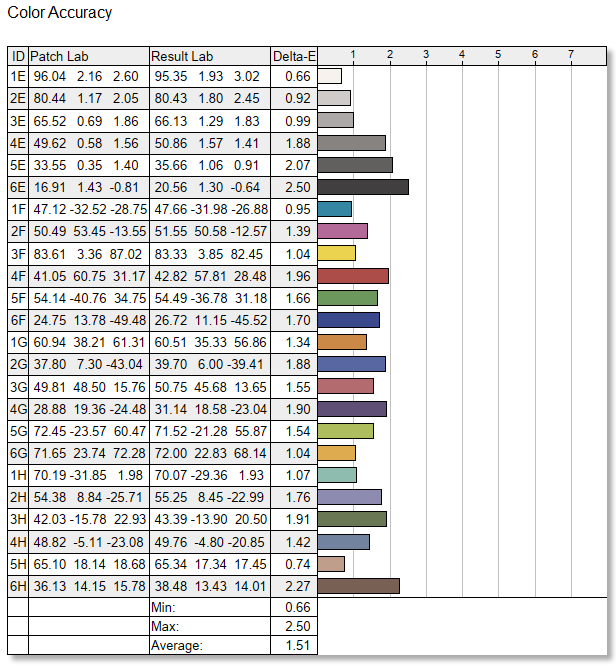
- Uncalibrated
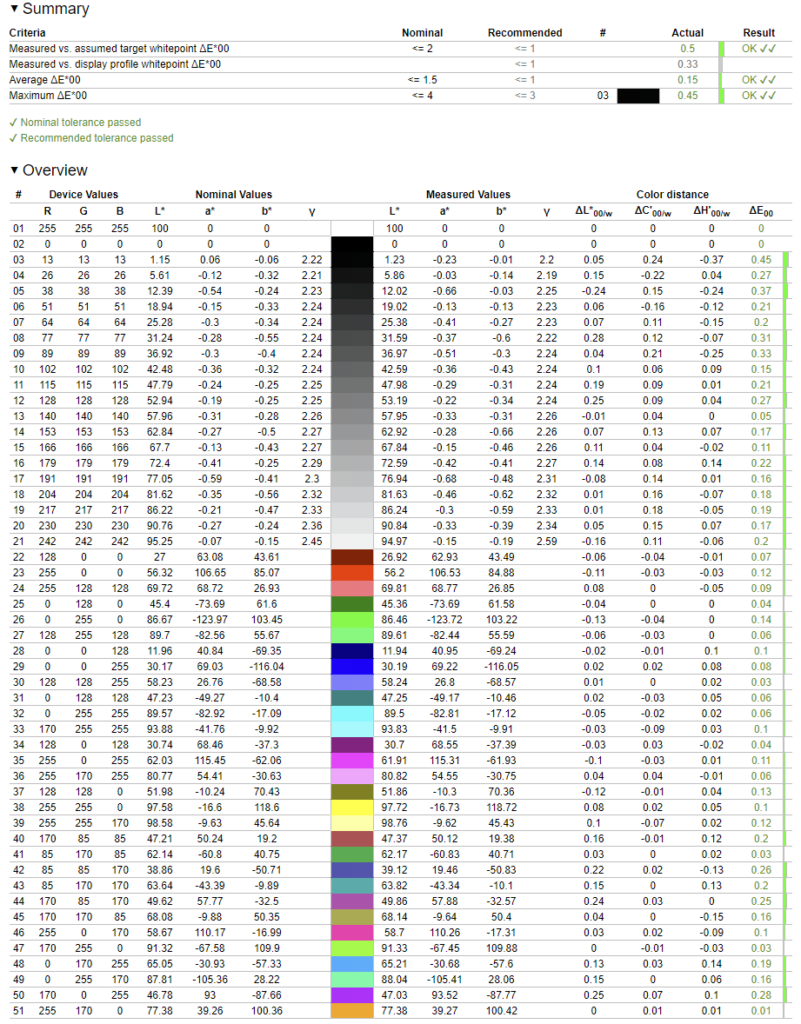
- Calibrated
The Evnia 42M2N8900 we recently reviewed had issues with the high saturation of colours making images look slightly unnatural, but the 34M2C8600 has a far better balance, bringing superbly vivid colour without looking oversaturated. A fairly accurate comparison would be the Samsung AMOLED screens they use in their phones – if you’ve ever used or seen one of those devices, you know what to expect (bloody brilliant, in my opinion). If you prefer or need to use a locked sRGB gamut, the sRGB mode reigns this in superbly, with full brightness control in sRGB mode.
SDR brightness is somewhat lacking, which is common with OLED panels, with peak brightness measuring around 245 cd/m² at full brightness. Although this is well below what we’d expect of premium IPS or VA displays, it’s within the usual range for an OLED panel, and it never feels too dark, especially when the contrast is so good thanks to the self-illuminating pixels. The exception would be if you exclusively use your monitor in a brightly lit room, with sunlight shining on your screen, as the glossy coating could make it very hard to see, but as long as you can place your setup away from excessively bright light sources it’s not likely to be an issue.
Black levels, as expected, are very good, and although our sensor gave a reading of 0.03 cd/m², it is essentially pitch black; As this is a curved monitor, it’s probable that there was a small amount of light leakage affecting the colorimeter. Likewise with the contrast – although the measured contrast was rated at 9300:1, the actual contrast is far, far greater.

As for Gamma, the Evnia 34M2C8600 hugged the 2.2 curve perfectly, as well as matching both the 1.8, 2.0 and 2.4 settings. Top marks there.
Gamut coverage and HDR
The QD-OLED panel in the 34M2C8600 has a native 10-bit colour depth, allowing it to display up to 1.07 billion colours. Gamut coverage* is exceptional, with both DCI-P3 and AdobeRGB producing excellent results.
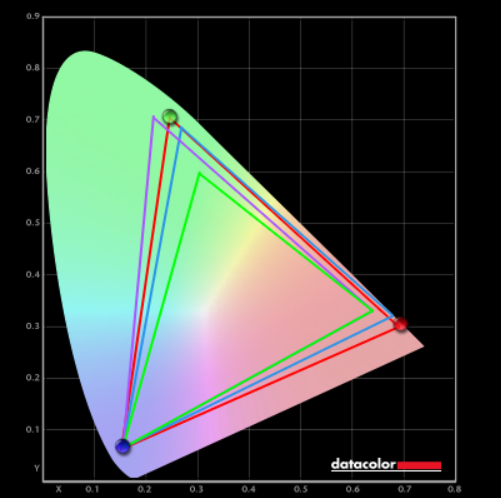
- sRGB 100% coverage – 169.3% volume
- AdobeRGB 97.7% coverage – 116.7% volume
- DCI-P3 97.2% coverage – 119.9% volume
*Coverage is how much of the gamut is covered, whilst volume includes any colour that extends beyond the defined gamut.
Utilising both the sRGB and 6500K modes, we recorded 100% gamut coverage with a volume of 101.8% in sRGB. Additionally, both DCI-P3 and AdobeRGB coverage are huge, with the DCI-P3 coverage going a long way when it comes to the sublime colours of HDR content..
HDR performance is exemplary. This display is capable of exceeding 1000 cd/m² for small, brief highlights (<3% of the display area), and 450 cd/m² for larger highlights (<10% total display area). When compared to some of the >1400 cd/m² Mini-LED panels with native full-screen brightness in excess of 750 cd/m² it’s not as retina-searingly powerful. However, when paired with the ultra-dark blacks of the OLED pixels, the net result is just as impressive, giving astounding contrast between dark and light elements with no haloing around tiny light sources.
Viewing angles and uniformity
Because this is an OLED, there is obviously no backlight bleed (backlight bleed is when edge-lit displays leak light from around the edges/bezels of the display), but there was no light bleed either (when the backlight passes through the display, often visible as blacks taking on a grey tinge – you’d know it if you saw it). Viewing angles are also outstanding, with no notable colour/contrast shift as you move around the display.
Colour and brightness uniformity was the best I’ve ever measured, and accurate to within a couple of percent across the entire panel. Considering this is an ultrawide montor, which usually have larger variances towards their outer edges, this is an incredible result.




Protecting your OLED
A lot of people, quite rightly so, are concerned about protecting their OLED displays. Early implementations, especially on TVs, were prone to burn-in and severe panel degradation, but with this being a gaming monitor, Philips has put sensible measures in place.
The Evnia 34M2C8600 displays a reminder to activate Pixel Refresh after 4 hours of use. Activating this will refresh the panel and prevent screen burn by switching off the screen for about 3 minutes and refreshing the pixels. This can be ignored, but after another 2 hours, another brief reminder will pop up. This will carry on for up to 16 hours, at which point the display finally forces you to refresh the pixels. Realistically, you aren’t going to be using the display for 16 hours straight, and if you are, it doesn’t hurt to activate pixel refresh while you nip to the bathroom/grab a beverage/have a snack/touch grass (whatever normal people do when not gaming – weirdos).
The time between refreshes is cumulative, but the Evnia very conveniently performs both a pixel refresh and panel refresh after it has been on standby for over two hours. As long as you don’t run static images 24/7, whatever concerns you may have about OLED gaming displays can safely be ignored. I would add, though, that it’s beneficial activating a screen saver on your desktop. The function is not present in regular Windows 11 display settings (it’s still there in the old-school control panel, though), so to find screen-saver settings, just type it into the taskbar search box.
The Evnia 34M2C8600 also has a couple of additional OLED protection features; Pixel Orbiting and Screen Saver. Pixel Orbiting occasionally shifts the image by a couple of pixels to prevent screen burn from static images – I checked for this on the 42M2N8900 and couldn’t see anything happening, but on this display, I spotted a clear shift as it adjusted the pixels. I never noticed it while gaming or watching content, but when viewing a static image it was noticeable. Not an issue, I would add, but I was pleased to see that it actually works.
The final screen protection element is the screen saver, and it works very well. If the display detects no significant changes for a few minutes, the lighting gradually dims and springs back to full brightness when motion is detected. If you are reading lengthy documents or writing, the subtle changes of text scrolling or typing aren’t enough to prevent the screen saver from kicking in, but a quick wobble of the active window will bring it back to your preferred brightness. All of these panel protection technologies can be switched off, but they are unintrusive and well worth protecting your monitor for many years to come.
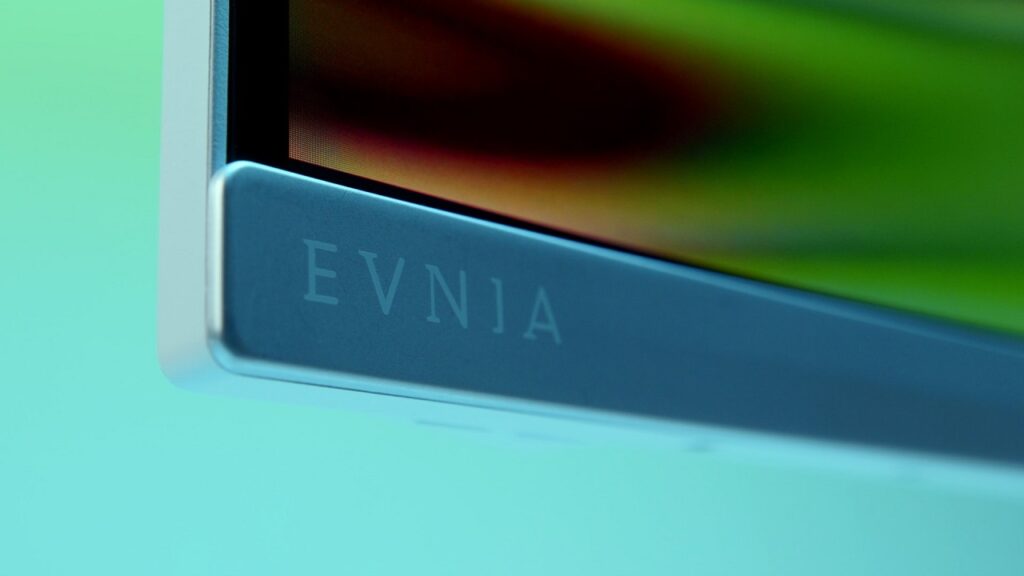
Sound quality
The Evnia 34M2C8600 has a punchy pair of 5W speakers that are much better than the usual crap shoved into monitors. Bass is present, albeit lacking in the low end, and it blended well with prominent mids and crisp treble. The overall sound signature has warmth and clarity, with a decent soundstage, respectable imaging and surprising amounts of projection. I’d still take quality bookshelf speakers any day, but if you primarily use headphones, these speakers are more than capable if you only need to use them occasionally.
Summary
The Envia 34M2C8600 is as close to perfect a gaming display as I’ve ever seen. It’s simply phenomenal. There’s room for improvement, but the main thing – lack of user colour adjustment – can (and likely will) be added via a firmware update. Its responsiveness is second to none, and although there are technically faster refresh panels available surpassing 240 Hz, none that I’ve seen have such low input latency or rapid response.
It’s not just speed, though. The QD-OLED is really something to behold, with massive gamut coverage and wonderfully vivid yet natural native 10-bit colour. This is easily one of the best gaming monitors available today, and well worth the asking price.
